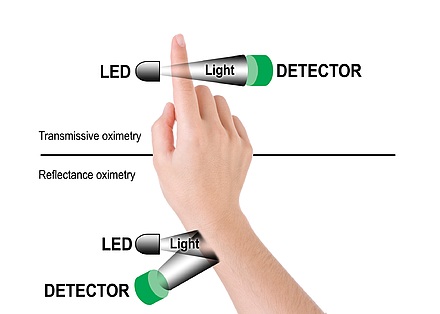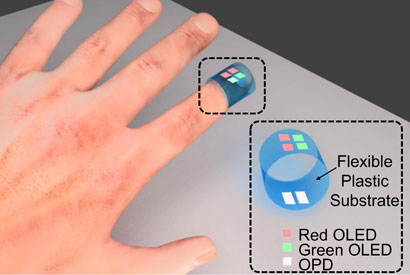To stay away from breathing problems and any sort of health emergencies, the oxygen level in blood should be maintained continuously. There are already a number of such monitoring systems and even pulse oximeters designed specifically for this purpose. However, these setups are bulky and nobody wants to use something bulky in today’s age of technology. A team of scientists from University of California (UC) Berkeley are working to reduce the burdensome task by developing a blood-oxygen sensor that can be used just like a Band-Aid.
The conventional pulse oximeters make use of LEDs that fire infrared and red light aimed through certain parts of human body such as an earlobe or a fingertip, while a sensor awaits on the receiving end to ascertain how much of the light has managed to make its way through. Blood that is rich in oxygen absorbs more infrared light while blood with low levels of oxygen absorbs more red light. Thus, the sensor detects the amount of the two and conveys the oxygen level in blood.
UC Berkeley’s team makes use of green and red light instead that is, as per them, as effective as the traditional approach. The LEDs have been created from organic materials and subsequently integrated onto a flexible strip of plastic. The prototype was tested by researchers alongside the traditional pulse oximeters and the discovery indicated that the readings were accurate.
Ana Aria, Associate Professor Electrical Engineering and Computer Sciences also Head of the UC Berkeley, said, “We showed that if you take measurements with different wavelengths, it works, and if you use unconventional semiconductors, it works. Because organic electronics are flexible, they can easily conform to the body.” The most obvious advantage of this sensor is the cost which is reportedly quite less as compared to existing sensors. The researchers also stated that the cost is so less that the user can discard these strips after a single use.
Pretty cool isn’t it?


